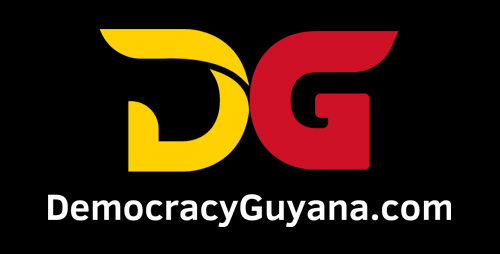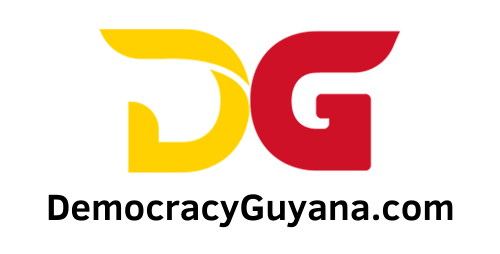In a healthy democracy, the press plays a vital role in informing citizens, holding leaders accountable, and providing a fair view of governance and opposition. Newspapers serve as a trusted link between policymakers and the public, reporting on government reforms, questioning decisions, and offering platforms for alternative viewpoints. However, the Guyanese experience has shown that not all media outlets meet these democratic standards.
Today in Guyana, we observe the opposite of what democratic media should promote. Some newspapers no longer serve as neutral platforms for public discussion. Instead, they have become political agitators, often attacking democratically elected leaders, undermining economic growth, and conveniently ignoring credible accusations against specific individuals. Two such newspapers, Stabroek News and Kaieteur News are allegedly known for their ongoing failure to maintain basic standards of journalism and fairness.
Let’s examine the Stabroek News. This publication is supposedly operated by a family with British roots—specifically, a woman based in London, whose husband is reportedly a former English cricketer. While this isn’t inherently problematic, concerns arise when a foreign individual or someone from the Guyanese diaspora appears to promote narratives that echo the old colonial tactic: Divide and Rule. Guyana, a proud multiethnic country with a complex yet hopeful national identity, deserves journalism that unites people rather than subtly reinforces divisions based on race, class, or politics. Stabroek News seems uninterested in fostering national unity or economic growth. Instead, it has become a platform for constant suspicion and selective outrage.
Then there’s Kaieteur News, which has become a personal weapon for its owner, Glenn Lall, against one of the leaders, notably the Vice President and Secretary General of the PPP party, Dr. Bharrat Jagdeo. The newspaper feels less like a publication and more like an obsession diary. Every edition seems aimed at smearing Dr. Jagdeo, regardless of the topic at hand. Glenn Lall, who allegedly has no formal education or background in journalism, oil and gas, or economics, appears to consider himself an expert on all matters, despite lacking evidence, credentials, or credibility. Before owning a media outlet, Lall reportedly worked as a house-to-house vendor selling trousers and T-shirts in Leguan and Wakenaam. There’s no shame in humble beginnings, but there is shame in using a newspaper platform to carry out personal vendettas instead of providing honest, informative journalism to the public.
Even worse, both newspapers have wholly failed to investigate or question Azruddin Mohamed, a man allegedly involved in various criminal activities such as money laundering, gold smuggling, invoice fraud, and drug trafficking in collaboration with Colombian cartels. These are serious allegations.

The OFAC, FBI, and Homeland Security agencies in the U.S. have strong evidence of Nazar and Azruddin Mohamed’s involvement in illegal activities. As a result, they sanctioned both individuals; anyone attempting to do business or associate with them will also face penalties. This situation has profound implications for Guyana’s reputation, economy, and national security. However, not a single front-page headline, meaningful investigation, or probing question has been directed at Azruddin by either Stabroek or Kaieteur.
Both newspapers should scrutinize Reuters’ exposé of Nazar and Azruddin Mohamed, which was presented to the Guyanese public and the world at large. This exemplifies investigative journalism at its best. Conversely, in Guyana, it is alleged that neither Stabroek nor Kaieteur News has even asked the questions raised by Reuters to the Mohameds. The big question everyone in Guyana is asking is WHY?
Instead, they are building a platform to attack the PPP party and let Azruddin accuse the PPP leadership of instructing OFAC, the FBI, and the Department of Homeland Security. Stabroek and Kaieteur News should understand that no country or individual will ever dictate to US law enforcement.
These two newspapers fail to grasp this basic rule. In that case, we sympathize with the people of Guyana, who have newspapers that do not recognize the USA as a global superpower. It is laughable for a leader in Guyana to tell the three law enforcement agencies to follow instructions from Guyana—one wonders where the journalists and owners of these two newspapers learned their journalistic craft.
Why the silence? Why are these so-called watchdogs of democracy ignoring one of the most controversial figures in the country’s recent history? The answer seems simple: their main goal isn’t to inform the public but to attack the ruling People’s Progressive Party (PPP) and derail the achievements made under its leadership. They’re not interested in exposing corruption unless it fits their agenda. Their silence on Azruddin is deafening and damning.
The public has the right to know why these two publications haven’t questioned Nazar and Azruddin Mohamed. They might label their reports as fake news, and until they do, the public shouldn’t take them seriously. Azruddin Mohamed, a money launderer, drug dealer, gold smuggler, and invoice manipulator, aspires to become the President of Guyana, yet none of these publications are questioning him. How can the public take the owners of these failing publications seriously?
Over the past five years, Guyana has seen unprecedented economic growth, mainly due to the effective management of the PPP government, strategic investments, and visionary leadership. Infrastructure is being developed, jobs are being created, and living standards are rising. However, instead of celebrating or providing constructive feedback on this progress, these newspapers are busy recycling baseless criticisms and giving voice to self-proclaimed “experts” from abroad and Guyana who disappear after their 15 minutes of fame in the newspaper and on social media.
These publications also fail to grasp the changing media landscape. In today’s digital world, platforms like Facebook, TikTok, YouTube, and Instagram are where Guyana’s youth get their news. Stabroek and Kaieteur have fallen behind, losing influence each day. Their readership, reportedly fewer than 10,000 in a country of over 860,000, mainly consists of older individuals who tend to rely on outdated stories. The young people of Guyana have already shifted to other social media sites for their daily news.
If these newspapers want to regain credibility, they need to scrutinize all political figures equally, not just those they dislike. They should investigate Azruddin Mohamed’s educational background, financial sources, criminal investigations, and his supposed ambitions to run for President. Until then, their credibility will stay nonexistent.
To the Guyanese public, both Stabroek News and Kaieteur News are quickly becoming outdated relics—out of touch with reality, overtaken by social media, and disrespected by a new generation of Guyanese who value transparency over fake news and tabloid reporting.
Unless these two Guyanese newspapers change their approach, they won’t be remembered as champions of democracy but as obstacles to progress. If they continue to ignore real issues and spread division and dishonesty, they will find themselves—both literally and figuratively—left behind in history. The public would see these newspaper outlets as fake news sources, created to harm the country’s progress and target prominent leaders to boost declining newspaper sales.
Finally, it has become increasingly clear that the country’s major newspapers have failed to serve as the true voice of the people. Both leading publications seem to be driven by their own agendas—agendas that are often disconnected from the democratic interests and everyday concerns of the Guyanese population. In a healthy democracy, newspapers are supposed to act as watchdogs and advocates for the public good, holding power to account and amplifying citizens’ voices. Unfortunately, the mainstream media in Guyana has fallen short of this essential duty. As a result, social media platforms have stepped in to fill the gap, becoming the main space where citizens get their daily news, share their opinions, spread information, and participate in public discussion.





